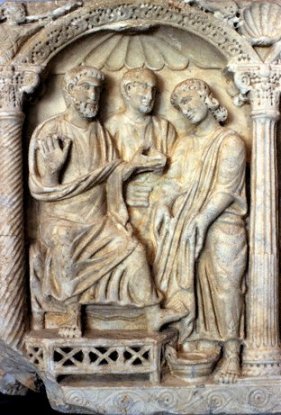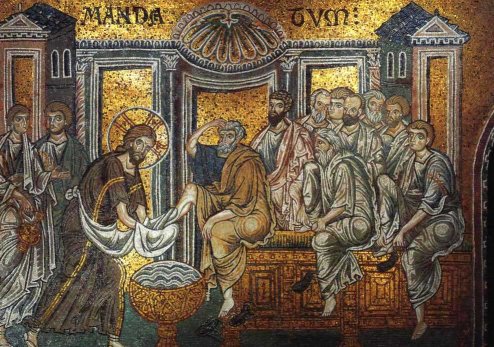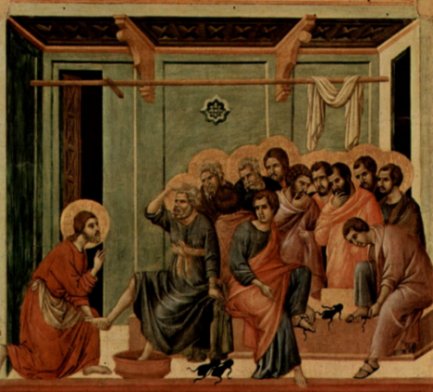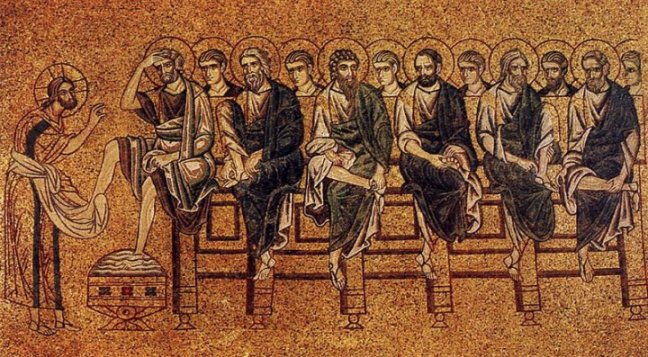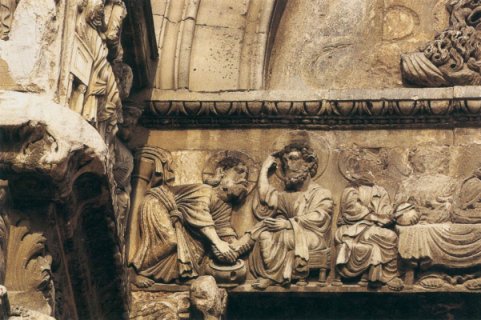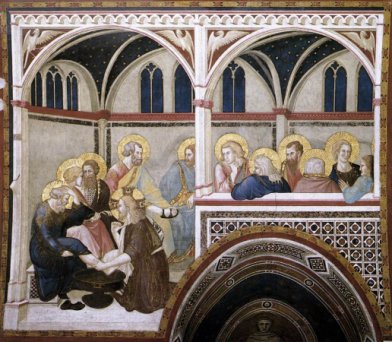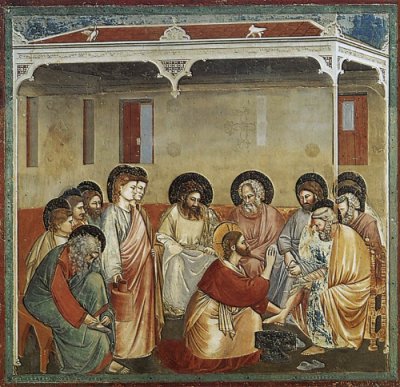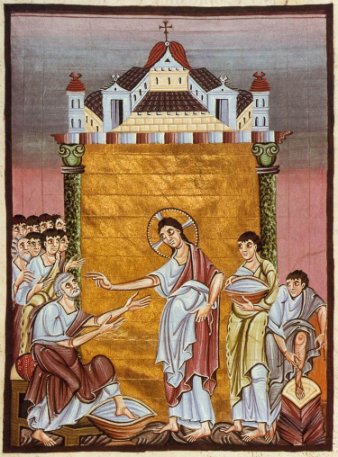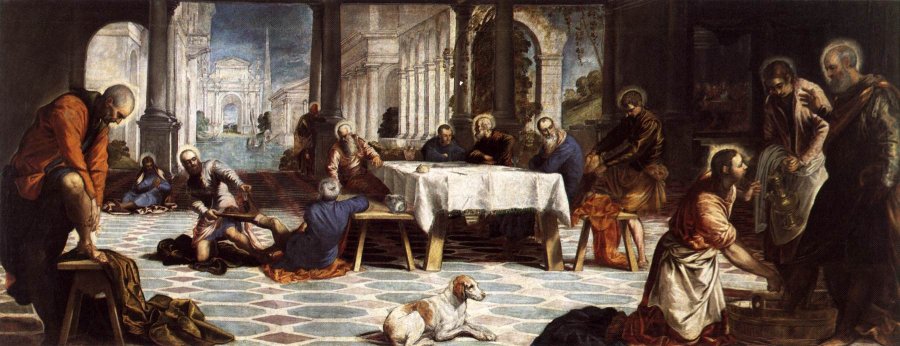|
The Passion of Christ |
|
|
Washing the Feet |
|
|
This event is described by John in
chapter 13: 'After that he poureth water into a bason, and began to wash the disciples' feet, and to wipe them with the towel wherewith he was girded. Then cometh he to Simon Peter: and Peter saith unto him, Lord, dost thou wash my feet? Jesus answered and said unto him, What I do thou knowest not now; but thou shalt know hereafter. Peter saith unto him, Thou shalt never wash my feet. Jesus answered him, If I wash thee not, thou hast no part with me. Simon Peter saith unto him, Lord, not my feet only, but also my hands and my head. Jesus saith to him, He that is washed needeth not save to wash his feet, but is clean every whit: and ye are clean, but not all. For he knew who should betray him; therefore said he, Ye are not all clean. So after he had washed their feet, and had taken his garments, and was set down again, he said unto them, know ye what I have done to you? Ye call me Master and Lord: and ye say well; for so I am. If I then, your Lord and Master, have washed your feet; ye also ought to wash one another's feet. For I have given you an example, that ye should do as I have done to you. Verily, verily, I say unto you, The servant is not greater than his lord; neither he that is sent greater than he that sent him. If ye know these things, happy are ye if ye do them Washing of feet has now become a familiar ritual, and Christ's explanation of why he performed the task explains why. We shouldn't lose sight, though, of the fact that at the time it was a practical necessity; sandals were the standard footwear, and the roads were covered in dust and dung. Meals were not generally eaten sitting at the sort of dining room table shown in paintings such as that by Tintoretto below, and dirty feet would be all too obvious. It was normally the job of a house servant/slave to do what was necessary. |
|
|
On the right is probably the earliest existing image of the Washing of the Feet, found on a fourth century sarcophagus now in the Musée de l'Arles Antiques in Arles. As with most very early images, Christ is shown as young, almost childlike, while Peter looks delighted to have his feet washed, although his hand do suggest his astonishment. Christ here is standing, not demonstrating humility by kneeling. Peter is raised up to allow for this. |
|
|
As with the sarcophagus, later images show Christ with Peter, but in these the altercation between them is emphasised. What connects the images? |
|
|
|
|
|
|
|
|
|
|
|
A diverse collection; Byzantine,
Italian Gothic, early French, and yet Peter's gesture is the same in
each. Presumably this illustrates Peter's remark, 'Lord, not my
feet only, but also my hands and my head', though Anna Jameson in The
History of Our Lord suggests that this may also be a sign of humility. Not all early images show this gesture. Giotto shows Peter glaring crossly at Christ, while in the very early manuscript illumination Peter is holding out his hands. In both images Christ is blessing Peter. Note the posture of Christ: in some images, he is kneeling, but other versions allow him to stand by raising the disciples up, as in the San Marco mosaic. In the Giotto image, Anna Jameson suggests that the figure on the left doing up his sandals is Judas; tradition has it that his feet were washed first. |
|
|
|
|
| Anna Jameson tells us she is 'shocked' by many later images, which, she feels show a lack of refinement and feeling. I have not been able to track down the particular ones she mentions, so lets look a much later one, Tintoretto's version in the Prado. | |
|
|
|
|
On the right we have the foot-washing, with Peter raising his cautionary hand as we have seen before. But what about the rest of the picture. Was a dog really necessary, even if it is a symbol of loyalty? (A familiar excuse for putting one in.) What about the almost comic scene of one disciple struggling to pull another disciple's socks off? Lack of feeling? What would Anna think? A Mystery What she might wonder about is the identification of the disciples. Next to Peter is the youthful looking John the Evangelist. At first I assumed that the figure on the extreme left was Judas, which would balance the group on the right as in the Giotto version. However, it has been pointed out (by my good friend and distinguished art blogger Francis DeStefano) that this disciple's head is surrounded by a nimbus, hardly appropriate for Judas. Close inspection of the painting, however, reveals that there is a complete set of twelve disciples and they all appear to have a nimbus! So which one is Judas? Frank suggests the figure leaning on the pillar lurking at the back, or maybe the disciple at the table staring at Jesus. I'm wondering about the one having his socks pulled off, as the nimbus is hardly discernable. |
|
